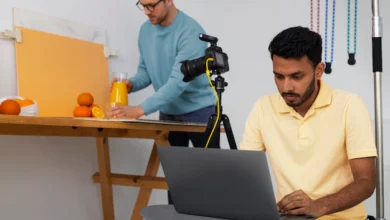How to Create Impactful Videos from Your Images in Minutes

In today’s online world videos are a great way to catch people’s attention because they are interesting and exciting. If you’re a creator or marketer or just someone wanting cool memories videos from pictures make everything better. The best thing is making videos is easy since you don’t need to know much about technology to start. By following a few easy steps you can turn your image to video in just minutes.
Why Videos Are More Engaging Than Images
Videos are better than pictures because they use motion and sound and images together to tell stories people love. They grab attention faster and help people feel emotions more deeply while also sharing messages in a clearer way. Videos are perfect for social media or professional use because they stand out and make people watch longer than photos do. Whether you’re showing a product or telling a story or making a faceless reel videos help you get creative.
Getting Started with Image to Video Tools
The first step in creating a video from your images is choosing the right tools. Image to video tools provide intuitive features that make the process smooth and efficient. These tools allow you to upload images, arrange them in sequence, and add effects like transitions, text, and music. In just a few clicks, you can transform a simple slideshow into a professional-quality video.
Key Features to Look for in Image to Video Tools
- Ease of Use: A user-friendly interface ensures that beginners can navigate without confusion.
- Customization Options: Look for features like text overlays, music tracks, and adjustable transition effects.
- Export Options: Ensure the tool supports high-quality export formats suitable for your intended platform.
Steps to Create an Impactful Video from Your Images
1. Plan Your Video Concept
Before diving into the creation process, outline the purpose of your video. Are you making a family montage, a promotional clip, or an educational reel? Identifying your goal helps in selecting the right images and deciding on a cohesive theme.
2. Organize Your Images
Arrange your images in a logical sequence to tell a story. For example:
- Start with a captivating image to grab attention.
- Use middle images to build the narrative.
- End with a strong, memorable closing image.
3. Choose a Theme or Style
A theme adds consistency to your video. Whether you’re going for a vibrant and playful vibe or a sleek and professional look, matching the theme with your content is crucial.
4. Add Transitions and Effects
Transitions make your video flow seamlessly. Experiment with fades, slides, or zoom effects to add a dynamic touch. Subtle transitions work best for professional videos, while playful effects are great for casual content.
5. Incorporate Text and Captions
Use text overlays to highlight key points, introduce sections, or add context to your images. Captions can enhance the storytelling aspect, making your video more engaging and informative.
6. Enhance with Music
Music breathes life into videos. Choose a track that complements the mood of your video. For instance, upbeat music works well for travel reels, while soft instrumental tunes are perfect for nostalgic montages.
Creating Faceless Reels with Images
Faceless reels have gained popularity for their mysterious and artistic appeal. By combining images, abstract visuals, and creative effects, you can craft reels that captivate viewers without revealing faces. These reels are especially effective for highlighting landscapes, products, or conceptual themes.
To create a faceless reel:
- Focus on high-quality images that convey emotion or a story.
- Use transitions that create a smooth flow between images.
- Add text overlays or animations to emphasize key moments.
Tips for Making Your Video Stand Out
1. Keep It Short and Sweet
Attention spans are limited, especially on social media. Aim for a video length of 30 to 60 seconds to maintain viewer engagement.
2. Focus on Visual Quality
High-resolution images ensure your video looks professional and crisp. Avoid blurry or pixelated visuals.
3. Experiment with Animations
Animations can make your video more dynamic. Use them sparingly to draw attention without overwhelming the viewer.
4. Test Different Aspect Ratios
Different platforms favor different video dimensions. For example:
- 16:9 for YouTube.
- 1:1 for Instagram posts.
- 9:16 for Instagram Stories and TikTok.
5. End with a Call-to-Action
If your video is for promotional purposes, encourage viewers to take action, like visiting a website, subscribing, or sharing the video.
Benefits of Using Images to Create Videos
Creating videos from images has several advantages:
- Cost-Effective: You don’t need expensive recording equipment or professional editing software.
- Time-Saving: The process is quick, especially with the help of customization features.
- Versatility: Videos can be repurposed across platforms for various audiences.
- Accessibility: Even beginners can create stunning videos with minimal effort.
Mistakes to Avoid When Creating Videos
Using too many effects will make your video look messy and very confusing to watch. Choosing music that doesn’t match the mood can make your video feel off and ruin the experience. Ignoring smooth flow and good transitions will make the video feel choppy and hard to follow. Adding too much text can make the video look crowded and distract people from enjoying the visuals.
Conclusion
Turning your pictures into videos is a great way to make memories exciting or boost your marketing ideas. With the right tools and simple steps, making videos can be quick and super easy for everyone to do. Gather your favorite pictures and let your imagination go wild while creating amazing videos that stand out. Right now is the best time to use visuals and stories to make an impact on people. Whether for fun or work great videos will improve your content and help you connect with your audience better.




